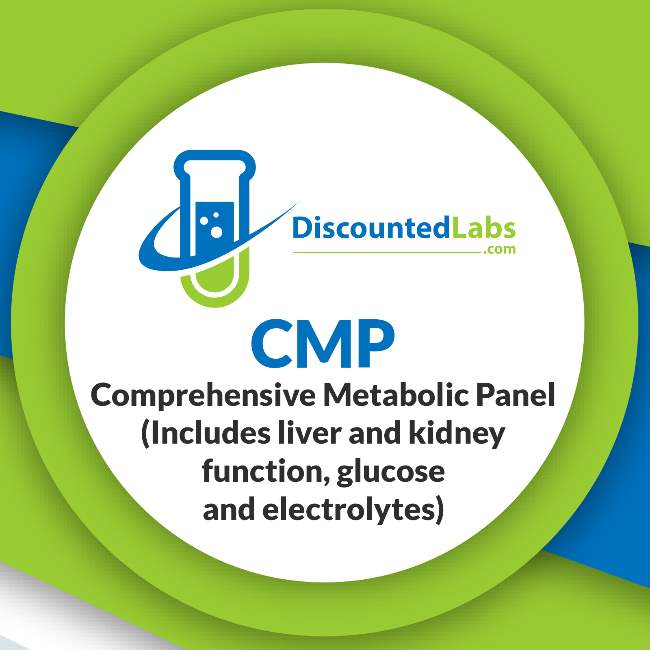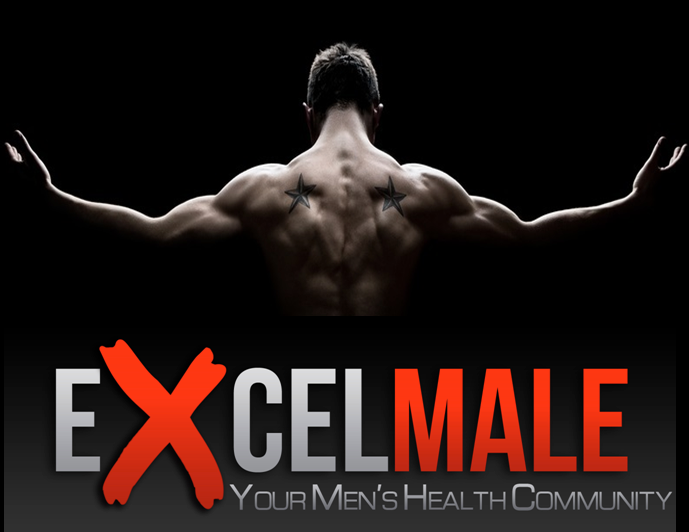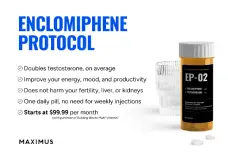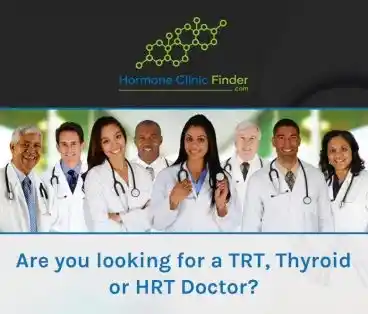Fig. 1 Proposed mechanism of testosterone and HIV on the systemic vasculature. This figure exemplifies the similarities of both TD and HIV on the vascular system and therefore the potential to enhance CVD risk. Both conditions lead to vessel injury and endothelial dysfunction, which increase the CVD risk in this population and emphasize the importance of early treatment for people with these comorbidities

Abstract
Purpose of Review
This review evaluates recent literature (2020–2025) on testosterone deficiency (TD) and its cardiovascular implications in men living with HIV (MLH), focusing on prevalence, underlying mechanisms, diagnostic challenges, and management strategies, including cardiovascular risks linked to testosterone replacement therapy (TRT).
Recent Findings
TD remains highly prevalent in MLH, often manifesting earlier than in the general population due to chronic inflammation and immune dysregulation. While TRT's cardiovascular risks have been debated, recent studies indicate no significant increase in major cardiovascular events among TRT users compared to placebo, though some adverse effects remain a concern.
Summary
With HIV now a chronic condition due to antiretroviral therapy (ART), the focus has shifted to managing noninfectious comorbidities like TD. MLH experience TD at younger ages and require personalized care to address this condition and its associated risks effectively.
Introduction
What is Currently Known About Testosterone Deficiency in Men Living with HIV?
Since the advent of highly active antiretroviral therapy (ART), the treatment of HIV has transitioned to a chronic disease. This shift has brought about a change in the complications that men living with HIV (MLH) face, moving from opportunistic infectious to chronic non-infectious comorbidities [1]. These comorbidities, including liver, renal, cardiovascular diseases, osteoporosis, metabolic disorders, and cancers, present unique challenges for MLH. Testosterone deficiency (TD), also known as male hypogonadism, is a clinical syndrome that commonly occurs in MLH. It is characterized by consistently low levels of serum testosterone accompanied by symptoms that align with TD. In MLH, the presence of low testosterone in conjunction with low or inappropriately normal gonadotropin levels is considered secondary hypogonadism and is thought to be from HIV-associated dysfunction of the hypothalamic-pituitary–gonadal (HPG) axis [1]
The prevalence of TD in MLH is estimated to be 34.5%[2]. In men without HIV, the prevalence of biochemical male hypogonadism also increases with age, affecting approximately 12% of men aged 50 to 59 and rising to 49% in those aged 80 and older [3]. In MLH, the prevalence of TD increases with age; however, this population is affected earlier on in life [4]. Hypogonadism is seen in MLH in their 20-40 s, whereas in men without HIV, hypogonadism is a rare disease before the age of 40 [5]. However, the prevalence of hypogonadism among MLH varies considerably across studies, reflecting the heterogeneity in diagnostic criteria and patient populations studied [6]. The variability in hypogonadism prevalence among studies is mainly due to differing definitions and variabilities in the type of testosterone levels reported, thresholds, and reference ranges used [7]. These differences may significantly impact the reported prevalence and the understanding of hypogonadism in MLH [6, 7]
Why does Testosterone Deficiency Affect Men Living with HIV?
Chronic Inflammation has been linked to TD. Pro-infammatory cytokines, including interleukin-1 (IL-1) and tumor necrosis factor-alpha (TNF-α) for example, have been implicated in the suppression of the HPG axis, leading to reduced secretion of gonadotropin-releasing hormone (GnRH) and subsequent downstream effects on luteinizing hormone (LH) and follicle stimulating hormone (FSH) [5]. Chronic illness, weight loss, and malnutrition are additional factors contributing to the disruption of the HPG axis in people living with HIV. The catabolic state induced by HIV-related wasting syndrome, as well as possible opportunistic infections and malignancies that may necessitate chemotherapy or radiation, exacerbates the suppression of the HPG axis [8]. This can result in a more intricate interaction between secondary and primary hypogonadism. In such cases, direct damage to the gonads caused by HIV or its treatments can lead to primary hypogonadism, which is typically marked by elevated levels of gonadotropins. The initiation of antiretroviral therapy (ART) has also been associated with varying effects on testosterone levels. While some studies report an increase in testosterone following ART initiation, suggesting a partial restoration of HPG function or a direct impact of ART on gonadal function, the underlying mechanisms remain incompletely understood [9].
A Reminder of the Role of Testosterone in the Body
Testosterone is crucial in regulating secondary male characteristics and contributes to masculine traits. These include male hair distribution, changes in the voice by deepening the vocal tone. It also promotes anabolic effects, such as growth spurts during puberty via stimulating tissue growth at the epiphyseal plate and later closure,and the development of skeletal muscle through increased protein synthesis. Additionally, testosterone enhances erythropoiesis, leading to a higher hematocrit in males compared to females. As testosterone levels decline with age, men may consequently experience reduced testicular size, decreased libido, lower bone density, muscle mass loss, increased fat accumulation, and reduced erythropoiesis, which can result in anemia [10]. In circulation, testosterone is mainly bound to sex hormone binding globulin(SHBG), which modulates the delivery of testosterone to tissues. The abundance of SHBG and testosterone are highly related and can affect the ability to measure testosterone levels in the body [11]. In MLH, SHBG are elevated when compared to men without HIV and therefore highlights the importance of measuring SHBG together with a complete hormonal profile to properly diagnose and classify hypogonadism in MLH complaining about sexual symptoms [12, 13]
* What is the Relation of Testosterone and Cardiovascular Disease Risk?
* What is Known About Testosterone Replacement Therapy and Cardiovascular Risk?
* HIV‑Associated Cardiovascular Disease is Currently an Established Risk for People Living with HIV
* How to Diagnose Testosterone Deficiency?
* What is the Current Management for Testosterone Deficiency in MLH?
* What are Current Testosterone Replacement Therapy Options?
Future Directions
MLH represent an at-risk population with a distinct set of physiological and clinical considerations that complicate the diagnosis and management of testosterone deficiency. Despite the progress in ART and the improved life expectancy of MLH, this population continues to experience higher rates of hypogonadism at an earlier age compared to the general population. Furthermore, the interplay between HIV-related chronic inflammation, immune activation, and endocrine dysfunctions such as testosterone deficiency remains poorly understood, warranting more in-depth exploration specially to provide guidance for replenishment.
Future research is needed to understand the long-term cardiovascular effects of testosterone replacement therapy in MLH, especially considering the persistent inflammation and altered lipid metabolism in these patients. Studies that evaluate the safety and efficacy of different TRT formulations in MLH are essential, particularly in the context of their potential to exacerbate or mitigate cardiovascular risks. Future research is also necessary to identify biomarkers that can more accurately predict the risk of cardiovascular events in MLH, allowing for more personalized and effective treatment plans. In addition, future studies are needed to examine CVD risk in cisgender women with HIV that use testosterone as therapy or as part of a gender affirming hormone regimen.
Conclusions
Testosterone deficiency in men MLH is a prevalent condition that significantly impacts their quality of life and long-term health outcomes, particularly in relation to cardiovascular disease. MLH present with unique clinical challenges, including higher rates of testosterone deficiency at a younger age and a complex interplay between chronic inflammation,immune activation, and endocrine dysfunction.
The management of testosterone deficiency in this population requires a nuanced approach that considers the distinct pathophysiological mechanisms at play. While MLH have their unique CVD risks, the cardiovascular safety of TRT has been established with recent clinical trials and refutes several previous concerns regarding TRT. Additionally, the risk of hypogonadism and HIV presents a potentially compounding risk for CVD. In MLH, the need for early and accurate diagnosis, personalized treatment strategies, and careful monitoring cannot be overstated.
Further research is necessary to advance the understanding of the implications of TRT in MLH, develop more effective treatment protocols, and ultimately improve the long-term health outcomes for this and other vulnerable populations. As we continue to enhance our understanding of the intersection between HIV, hypogonadism, and cardiovascular health, it is essential that we prioritize the needs of MLH in future studies and clinical guidelines. By doing so, we can ensure that this at-risk group receives the comprehensive and tailored care they require to manage their health effectively in the long term.
Abstract
Purpose of Review
This review evaluates recent literature (2020–2025) on testosterone deficiency (TD) and its cardiovascular implications in men living with HIV (MLH), focusing on prevalence, underlying mechanisms, diagnostic challenges, and management strategies, including cardiovascular risks linked to testosterone replacement therapy (TRT).
Recent Findings
TD remains highly prevalent in MLH, often manifesting earlier than in the general population due to chronic inflammation and immune dysregulation. While TRT's cardiovascular risks have been debated, recent studies indicate no significant increase in major cardiovascular events among TRT users compared to placebo, though some adverse effects remain a concern.
Summary
With HIV now a chronic condition due to antiretroviral therapy (ART), the focus has shifted to managing noninfectious comorbidities like TD. MLH experience TD at younger ages and require personalized care to address this condition and its associated risks effectively.
Introduction
What is Currently Known About Testosterone Deficiency in Men Living with HIV?
Since the advent of highly active antiretroviral therapy (ART), the treatment of HIV has transitioned to a chronic disease. This shift has brought about a change in the complications that men living with HIV (MLH) face, moving from opportunistic infectious to chronic non-infectious comorbidities [1]. These comorbidities, including liver, renal, cardiovascular diseases, osteoporosis, metabolic disorders, and cancers, present unique challenges for MLH. Testosterone deficiency (TD), also known as male hypogonadism, is a clinical syndrome that commonly occurs in MLH. It is characterized by consistently low levels of serum testosterone accompanied by symptoms that align with TD. In MLH, the presence of low testosterone in conjunction with low or inappropriately normal gonadotropin levels is considered secondary hypogonadism and is thought to be from HIV-associated dysfunction of the hypothalamic-pituitary–gonadal (HPG) axis [1]
The prevalence of TD in MLH is estimated to be 34.5%[2]. In men without HIV, the prevalence of biochemical male hypogonadism also increases with age, affecting approximately 12% of men aged 50 to 59 and rising to 49% in those aged 80 and older [3]. In MLH, the prevalence of TD increases with age; however, this population is affected earlier on in life [4]. Hypogonadism is seen in MLH in their 20-40 s, whereas in men without HIV, hypogonadism is a rare disease before the age of 40 [5]. However, the prevalence of hypogonadism among MLH varies considerably across studies, reflecting the heterogeneity in diagnostic criteria and patient populations studied [6]. The variability in hypogonadism prevalence among studies is mainly due to differing definitions and variabilities in the type of testosterone levels reported, thresholds, and reference ranges used [7]. These differences may significantly impact the reported prevalence and the understanding of hypogonadism in MLH [6, 7]
Why does Testosterone Deficiency Affect Men Living with HIV?
Chronic Inflammation has been linked to TD. Pro-infammatory cytokines, including interleukin-1 (IL-1) and tumor necrosis factor-alpha (TNF-α) for example, have been implicated in the suppression of the HPG axis, leading to reduced secretion of gonadotropin-releasing hormone (GnRH) and subsequent downstream effects on luteinizing hormone (LH) and follicle stimulating hormone (FSH) [5]. Chronic illness, weight loss, and malnutrition are additional factors contributing to the disruption of the HPG axis in people living with HIV. The catabolic state induced by HIV-related wasting syndrome, as well as possible opportunistic infections and malignancies that may necessitate chemotherapy or radiation, exacerbates the suppression of the HPG axis [8]. This can result in a more intricate interaction between secondary and primary hypogonadism. In such cases, direct damage to the gonads caused by HIV or its treatments can lead to primary hypogonadism, which is typically marked by elevated levels of gonadotropins. The initiation of antiretroviral therapy (ART) has also been associated with varying effects on testosterone levels. While some studies report an increase in testosterone following ART initiation, suggesting a partial restoration of HPG function or a direct impact of ART on gonadal function, the underlying mechanisms remain incompletely understood [9].
A Reminder of the Role of Testosterone in the Body
Testosterone is crucial in regulating secondary male characteristics and contributes to masculine traits. These include male hair distribution, changes in the voice by deepening the vocal tone. It also promotes anabolic effects, such as growth spurts during puberty via stimulating tissue growth at the epiphyseal plate and later closure,and the development of skeletal muscle through increased protein synthesis. Additionally, testosterone enhances erythropoiesis, leading to a higher hematocrit in males compared to females. As testosterone levels decline with age, men may consequently experience reduced testicular size, decreased libido, lower bone density, muscle mass loss, increased fat accumulation, and reduced erythropoiesis, which can result in anemia [10]. In circulation, testosterone is mainly bound to sex hormone binding globulin(SHBG), which modulates the delivery of testosterone to tissues. The abundance of SHBG and testosterone are highly related and can affect the ability to measure testosterone levels in the body [11]. In MLH, SHBG are elevated when compared to men without HIV and therefore highlights the importance of measuring SHBG together with a complete hormonal profile to properly diagnose and classify hypogonadism in MLH complaining about sexual symptoms [12, 13]
* What is the Relation of Testosterone and Cardiovascular Disease Risk?
* What is Known About Testosterone Replacement Therapy and Cardiovascular Risk?
* HIV‑Associated Cardiovascular Disease is Currently an Established Risk for People Living with HIV
* How to Diagnose Testosterone Deficiency?
* What is the Current Management for Testosterone Deficiency in MLH?
* What are Current Testosterone Replacement Therapy Options?
Future Directions
MLH represent an at-risk population with a distinct set of physiological and clinical considerations that complicate the diagnosis and management of testosterone deficiency. Despite the progress in ART and the improved life expectancy of MLH, this population continues to experience higher rates of hypogonadism at an earlier age compared to the general population. Furthermore, the interplay between HIV-related chronic inflammation, immune activation, and endocrine dysfunctions such as testosterone deficiency remains poorly understood, warranting more in-depth exploration specially to provide guidance for replenishment.
Future research is needed to understand the long-term cardiovascular effects of testosterone replacement therapy in MLH, especially considering the persistent inflammation and altered lipid metabolism in these patients. Studies that evaluate the safety and efficacy of different TRT formulations in MLH are essential, particularly in the context of their potential to exacerbate or mitigate cardiovascular risks. Future research is also necessary to identify biomarkers that can more accurately predict the risk of cardiovascular events in MLH, allowing for more personalized and effective treatment plans. In addition, future studies are needed to examine CVD risk in cisgender women with HIV that use testosterone as therapy or as part of a gender affirming hormone regimen.
Conclusions
Testosterone deficiency in men MLH is a prevalent condition that significantly impacts their quality of life and long-term health outcomes, particularly in relation to cardiovascular disease. MLH present with unique clinical challenges, including higher rates of testosterone deficiency at a younger age and a complex interplay between chronic inflammation,immune activation, and endocrine dysfunction.
The management of testosterone deficiency in this population requires a nuanced approach that considers the distinct pathophysiological mechanisms at play. While MLH have their unique CVD risks, the cardiovascular safety of TRT has been established with recent clinical trials and refutes several previous concerns regarding TRT. Additionally, the risk of hypogonadism and HIV presents a potentially compounding risk for CVD. In MLH, the need for early and accurate diagnosis, personalized treatment strategies, and careful monitoring cannot be overstated.
Further research is necessary to advance the understanding of the implications of TRT in MLH, develop more effective treatment protocols, and ultimately improve the long-term health outcomes for this and other vulnerable populations. As we continue to enhance our understanding of the intersection between HIV, hypogonadism, and cardiovascular health, it is essential that we prioritize the needs of MLH in future studies and clinical guidelines. By doing so, we can ensure that this at-risk group receives the comprehensive and tailored care they require to manage their health effectively in the long term.
















